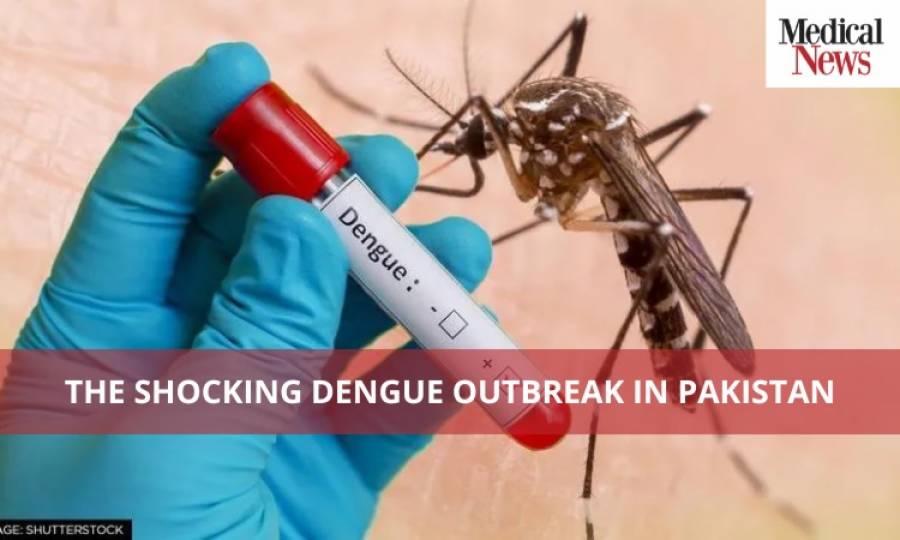The Shocking Dengue Outbreak in Pakistan

Dengue, also known as breakbone fever, is a vectorborne viral infection transmitted to humans by the female Aedes aegypti mosquito. More than half of the global population is at risk of Dengue, with 390 million people infected yearly. In Pakistan, Dengue is endemic, with multiple outbreaks reported since 2010. Pakistan has also been fighting Dengue simultaneously with the COVID-19 virus, which has burdened Pakistan's healthcare system. The recent floods have worsened matters, and the population has been fighting a severe infection. Due to contaminated water, the cases have risen tenfold. With 33 million people displaced due to floods, approximately 4100 cases of dengue fever have been reported in southern Sindh province, with at least nine deaths; the troubling factor is that this is a conservative estimate. The death toll in the relief camps due to Dengue, malaria, and gastric issues has reached 169. Daily new cases are being reported, and health officials are afraid the numbers will keep on growing in the upcoming months.
Symptoms and treatment of Dengue
Dengue can present several symptoms or no symptoms at all. The initial fever can mimic flu symptoms. The beginning of infection manifests signs such as high fever, headache, nausea, vomiting, malaise, and myalgia, with a rash appearing after 3 to 14 days. Dengue's critical phase presents some warning signs, such as abdominal pain, persistent vomiting, capillary leakage, dehydration, lethargy, mucosal bleeding, hepatomegaly, increased hematocrit, and thrombocytopenia. Additionally, patients with severe infection may even show bleeding manifestations (dengue haemorrhagic fever) and shock (dengue shock syndrome). There is no specific antiviral drug for Dengue or any vaccination that can prevent this infection from happening. The treatment is primarily symptomatic, in which pain, fever and dehydration are tackled. The mild disease is prevented from becoming severe. Severe infection requires hospitalization, and death may occur if there are signs of shock and haemorrhage.
Prevention and sustainable solutions
The stagnant flood water must be drained to immediately reduce mosquitoes' growing environment. Apart from this, public health officials need to declare an emergency, and they should implement widespread awareness programs. Hospitals need to be equipped for the diagnosis and management of this infection. Moreover, people in capital cities who are not affected by the floods can prevent this infection by staying indoors during peak hours, wearing full clothes, and using mosquito nets and repellants. The infected population should be getting tested as soon as there is a realization of persistent symptoms. Expanding disease surveillance and providing essential medicines to flood-stricken people should be the top priority.
On the other hand, the global world and the most significant economies need to pay attention to climate change. The floods and the infections are a direct result of these changes. Suffering third-world countries which do not contribute more than 1% of the greenhouse gases should not have to pay for the doom of climate change. Youth activists are doing their part, but now it’s time for the rich and the privileged to take action.
Trending
Popular
Dow University’s new rabies vaccine is just a phone call away
-
IRD role lauded in advancing ...
02:53 PM, 12 Mar, 2024 -
Over one billion people worldwide ...
09:48 AM, 5 Mar, 2024 -
Health Alert: Dried fruits found to ...
11:47 AM, 2 Mar, 2024 -
Quitting smoking early linked to better ...
09:56 AM, 19 Feb, 2024




